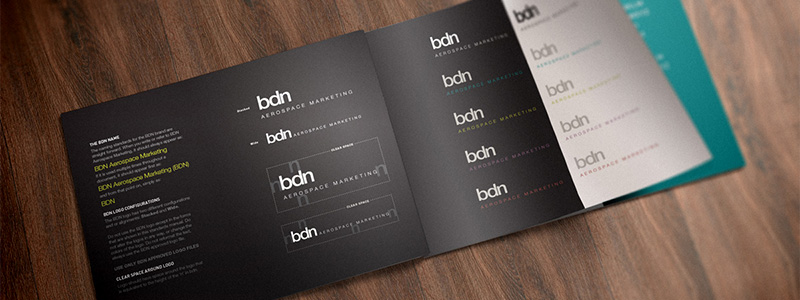Establishing Brand Guidelines: From Chaos to Consistency
You’ve come a long way. Whether you worked with an agency or leveraged in-house talent, you’ve created a cohesive and considered plan for the future of your brand. At this point, all that remains is to detail your vision and make it actionable for everyone in your organization.
The document you will create to do this is known as your brand guidelines, brand standards, or style guide. Regardless of the designation, this will be your roadmap and rulebook for creating and maintaining brand consistency.

Here are seven areas that should always be addressed in your brand guidelines.
- Purpose – Don’t take for granted that everyone in your organization understands or comprehends why adhering to a brand standard is important. Including a vision statement and purpose helps to get everyone on the same page.
- Tone – What’s the voice of your brand? Are you authoritative or quirky? When you refer to your company, should it be in first person or third person? Consistency in tempo, sentence length and vocabulary are all factors which should be considered.
- Logo – Be sure to identify all correct formats and color combinations for your logo. Don’t forget to include concepts like clear space (how much empty space to put around your logo), restrictions on backgrounds (solid colors, patterns, and photos) and acceptable sizes and orientations. If your brand has a tagline, it is important to define how it incorporates with your logo and when it is acceptable to use it.
- Color Palette – It is important to define not just the color or colors that appear in your logo, but specify additional colors which may be used to accent the primary colors. These are typically complementary colors, neutrals, or tints of the primary color. At a minimum, provide the values for all the approved colors in Pantone, CMYK and web (hexadecimal).
- Typeface – The power of consistent typography is often overlooked, but type is one of the most vital pieces of a unified brand. Detail which fonts are approved and in what situations they should be applied. For example, you may want to use a highly distinctive font for headlines, but a simple, easy-to-read font for paragraphs and blocks of text. Provide a list of acceptable alternative fonts for use in email, PowerPoint, and other situations where the exact font might not be available.
- Photography – Will your brand feature full-color action photography, moody black and whites, or something else altogether? How will you display your products and what about employee and executive portraits? Regardless of the project, having consistency in your imagery shows that you are a unified organization. Set some ground rules for the quality and required aspects of your photos.
- Brand Champion – When questions arise, approval is sought, or materials needed, who in your organization “owns” the brand? Ideally, this person or team should have knowledge of design, digital and print-production. They should be prepared to serve as “brand police” when necessary, and should have the authority to step in and correct off-brand practices. Provide contact information and define their role within the pages of your brand guidelines.
Remember that creating effective brand guidelines is a balancing act. On one end of the scale, you are creating uniformity by setting boundaries and on the other, you are allowing enough flexibility that designers and team members can create their best work. If you are too restrictive, teams and individuals are likely to “go rogue” and ignore the standards. If you leave it too open to interpretation, you may not achieve the unified front you desire.
Because markets, organizations, and technology are always evolving, brand guidelines serve as a living document. For this reason, many groups choose to keep them digital and host them online. Below are three such A&D industry examples which may serve as a useful reference:
[vc_separator type=”” size=”” icon=”plane”]
This concludes our month-long look at branding. Please join us each week in November where the topic will be marketing technology and we will be reporting on industry trends from NBAA BACE 2016.
